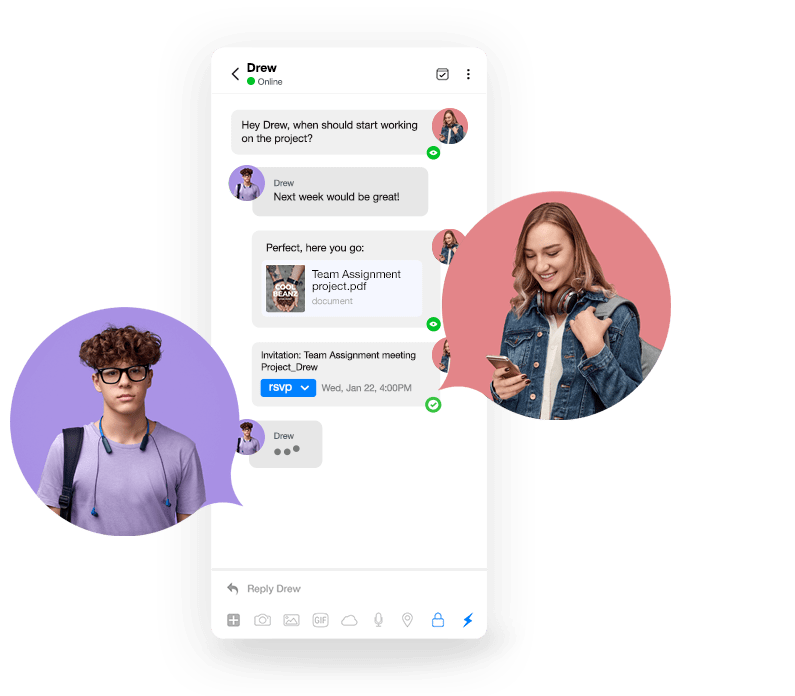How to Achieve Flow Through Asynchronous Communication

Becoming a high-performing hybrid team is not a quick journey! Heck becoming a high-performing team is elusive enough 🙂 but in this article we will talk about how you can use asynchronous communication as a hybrid team to find your flow, unlock new levels of productivity and achieve new heights.
First up, it’s important to say that as with team building and performance development of any kind, there is no finish line, no one has “cracked it” all the time. Performance is not linnear….it’s a river that ebbs, flows, meanders and hits rapids. The only thing that matters is that you constantly work actively on improving, moving forward and establish a growth-mindset in everyone on the team.
We have a unique opportunity now to redefine our relationship with work and set new ways of working, embrace new thinking to help position work in a new way as we look to the future. We can use the great transition to a hybrid workforce to improve and give new and better systems for the future.
Asynchronous vs Synchronous Communication
Asynchronous communication is just one way of handling this, but we think it’s crucial to how you find your flow and enable your team to do more of their best work — producing better results in less time and leading to a happier relationship with work. Sound good?….read on…
So what is the difference?
Synchronous communication is real-time communication when two or more people are talking or exchanging messages at the same time. Meetings (including zooms) or phone calls for example are synchronous communication.
Asynchronous communication is when two (or more) people can communicate without the requirement that they are present at the same exact moment in time. Asynchronous communication is the opposite of synchronous communication meaning that it’s not live and doesn’t require an immediate response. Because it’s a slower pace, the opportunity is there to think more carefully before you speak, thus allowing you the time to formulate a more thoughtful answer.
We love this example: the difference is between “my time” vs. “our time.”
In this analogy, “my time” is asynchronous communication time. Examples include an email, making videos, sending slack messages, writing updates or composing a document.
“Our time” on the other hand is synchronous communication, when people have live communication, such as team meetings, 1–1 meetings, phone calls or live text chat (WhatsApp and Slack can also be synchronous if it’s a back and forth exchange).
3 key benefits of asynchronous communication

You can choose when to respond
By choosing Async for certain messages within your team, you can help your team to have flexibility as to when they respond, leading to more thoughtful, accurate and considerate responses. Less of a rush on important but non-urgent matters — which can drastically reduce the stress levels of a team. For example, when you can get your thoughts across sufficiently with written text, an email or text message might be appropriate communication channels. If you need your team to hear your tone, understand the nuance of the topic — a voicenote might do the job nicely — or if you need to share facial expressions, body language and really exchange emotions, a video might work perfectly. The main point being, there’s several ways to deliver your message and async can often be the considerate way — as you give your team time to digest and reflect in their own way to respond with their best thoughts. Ultimately benefitting the quality of the team’s work and the company’s performance.
Improve clarity, improve efficiency and accuracy
Because it doesn’t require all parties to be present, asynchronous communication can help you keep the conversation going on your own time, which means fewer interruptions in your workday and more time to do focused work and respond with the right message, when you’ve had time to think. This can lead to better quality responses and less emotional reactions or toxic trigger events. We’ve all had the experience of a situation or a person setting us off in a conversation or a meeting. A rude comment, bad news, an unexpected inconvenience, a big change and we lose our composure. According to many neurological studies, when a person has a reaction to something in their environment, there’s a 90-second chemical process that happens; any remaining emotional response is just the person choosing to stay in that emotional loop.
If you don’t require a response or input immediately choosing async comms methods is giving your colleagues time and mindspace to give the best possible response and you’re both respecting each others workload and time. Often inefficacy can creep into meetings or team conversations (another topic!) where not everyone is truly adding value to the conversation. Choosing async for info sharing or updates can prevent stale or ineffective meetings creeping into your daily work-life and draining your team’s time and resources. Of course, there are times when real-time, synchronous communication is by far the best way to deliver your message — the key is choosing the right medium for the message.

Tap into your flow state and boost productivity
Working with async methods, allows more time for deep work and tapping into your flow state. What is flow? Flow is a state of mind you achieve when you’re fully immersed in a task, forgetting about the outside world. It’s a concept proposed by psychologist Mihály Csíkszentmihályi.
When you’re in the state of Flow, you:
- are completely focused on the task at hand;
- forget about yourself, about others, about the world around you;
- lose track of time;
- feel happy and in control; and
- become creative and productive.
Finding your flow leads to a sense of calm and peace in your work and brilliant productivity. You lose yourself in those important and challenging tasks that require deep thinking, and instead of being constantly interrupted by minor things (calls, emails, messages from coworkers, etc.), you are able to focus on the tasks long enough to actually complete them. And by losing yourself in them, you enjoy yourself more. This reduces stress levels and improves the quality of the work achieved. You achieve meaningful results and progress rather than just being responsive all day long. Finding your Flow state is the key to all of that.
Closing thought: never lose the human touch 🙏

There are downsides too to asynchronous communication. It does need to be effectively balanced with synchronous communication to ensure everyone’s needs are met and the business moves at the speed of the customer. I’m a huge believer in connecting in real live, that exchange of emotions is the real prize and the forum where team leaders especially can have the greatest impact. This is where you truly learn, grow and develop.
Async can help us make those moments stronger and even more impactful. Using asynchronous communication artfully is an important way to unlock new levels of performance and happiness in your team.
As you lead and work on this change, you need to understand when to deploy which type of communication and ensure expectations are clear. For example, if you need timely responses for a customer, synchronous may serve your needs better — or if your team starts to miscommunicate or misunderstand each other, a conversation is always required to develop relationships and understand expectations. When you need to unlock new thinking or grow together a conversation is always best.
But the quiet time and time to reflect on your work and find your flow is an important benefit of hybrid and remote working that can now be fully unleashed and used to everyone’s advantage. Your team can use FlowSpace to access the most tranquil and flow-inducing workspaces to help them both for their workdays when they are together as a team (synchronous!) or when they need to calm down, have a personal quiet day with their to do list and unlock new levels of performance through tapping into their Flow state.

We’re all getting started on this hybrid journey and we don’t have all the answers. But we enjoy sharing this journey with you and learning together. We’d love to hear from you and your team about how you find your flow — connect with us LinkedIn /insta or drop us a line at hello@flowspace.co or even better, let’s have coffee 🙂 and we look forward to keeping in touch.